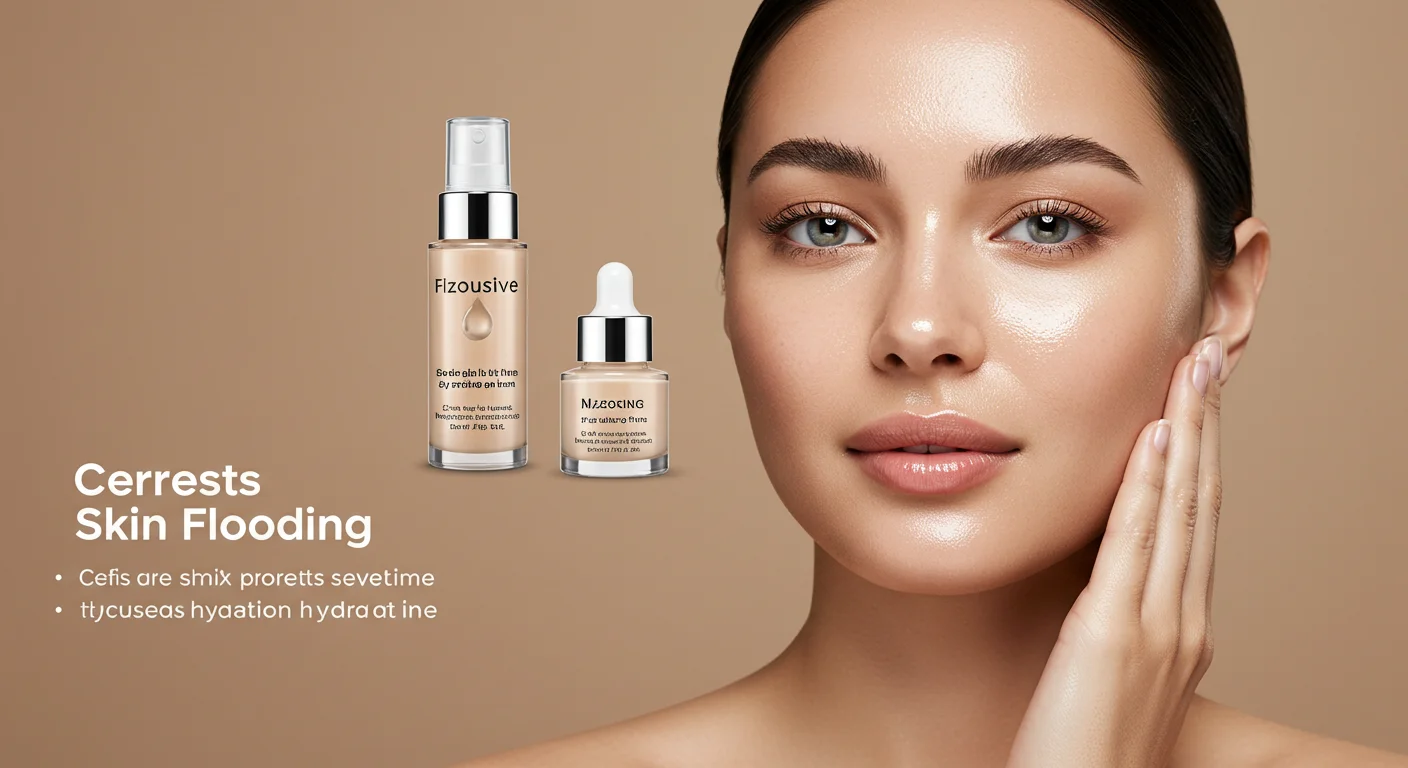If your skincare routine feels dull or your skin still looks thirsty after moisturizing, there is a new trend that might just transform your glow. It’s called skin flooding, and it’s the secret behind plump, hydrated, and dewy complexions seen all over TikTok and beauty blogs. In this complete guide, you’ll learn what it is, how it works, the science behind it, and how to make it part of your skincare routine safely and effectively.
What Is Skin Flooding?
It is a skincare technique that focuses on deeply hydrating the skin by layering products in a specific order while the skin is still damp. The goal is to allow multiple hydration layers to penetrate and lock in moisture, leaving your skin looking plump and glowing.
This technique first gained popularity on social media platforms like TikTok, where skincare enthusiasts showed incredible before-and-after results using only a few basic hydrating products. The secret lies in the way products are layered and sealed in — not just in the products themselves.
The Science Behind Skin Flooding
At its core, this method relies on understanding how hydration moves through your skin layers. Your skin naturally loses water through a process called Transepidermal Water Loss (TEWL). To prevent this, the skin needs humectants to draw in water, emollients to soften and smooth, and occlusives to seal everything inside.
Hyaluronic acid, one of the most important ingredients in this process, acts like a magnet for moisture, pulling hydration into your skin cells. When applied to damp skin, it performs even better, helping your face retain water for a longer time. Glycerin and ceramides are also essential in reducing TEWL and strengthening your skin barrier.
Dermatologists agree that sealing these hydrating layers with the right moisturizer prevents dryness, especially during harsh weather or after cleansing.
Step-by-Step Routine
To get the best results, follow these steps in the correct layering order. Always start with clean, slightly damp skin.
1. Cleanse Gently
Use a mild, hydrating cleanser that does not strip your natural oils. Pat your skin dry gently but keep it slightly moist.
2. Apply a Hydrating Mist or Toner
A fine mist helps to dampen the surface evenly. This allows the next layer, usually a serum, to absorb more effectively.

3. Add a Humectant Serum
Use a serum containing hyaluronic acid or glycerin. Apply 2–3 drops to damp skin, pressing it gently rather than rubbing. This step locks in water and gives your skin that plump, hydrated look.
4. Use a Lightweight Moisturizer
Next, use a moisturizer that contains ceramides or peptides to strengthen the skin barrier. This step helps reduce TEWL while adding softness.
5. Seal with an Occlusive
Finish with a thin layer of an occlusive product like squalane, shea butter, or a light facial oil. This traps moisture and prevents it from evaporating throughout the day.
Skin Flooding by Skin Type
Not all skin types need the same intensity of layering. Here’s how to customize your approach:
- Dry or Dehydrated Skin: You can safely use the full five steps daily. Add thicker emollients like shea butter or ceramide creams to boost moisture.
- Oily or Acne-Prone Skin: Choose lightweight gels and oil-free moisturizers to prevent clogging. Skip heavy occlusives if your pores get congested.
- Sensitive Skin: Always perform a patch test before applying new products to your face. Start slowly with fragrance-free and dermatologist-tested formulas.
- Mature or Aging Skin: Look for products with niacinamide and peptides. These ingredients help improve elasticity and reduce fine lines over time.
How Often Should You Practice Skin Flooding?
For most people, skin flooding works best once or twice a day, depending on the climate and skin condition. During dry seasons or after sun exposure, you can use this method daily. Avoid using it right after exfoliation or chemical peels to prevent irritation.
Remember, consistency is key. You will start noticing softer, more hydrated skin after a week of regular use.
Best Ingredients and Products
When choosing products, focus on ingredients that hydrate and protect your skin barrier. Here’s a quick guide:
- Humectants: Hyaluronic acid, glycerin, and aloe vera help attract moisture into your skin.
- Emollients: Ceramides, squalane, and fatty acids help smooth and soften texture.
- Occlusives: Shea butter, petrolatum alternatives, and natural oils like jojoba lock everything in.
To make things easy, you can create a hydration kit that suits your budget:
- Budget option: A basic toner, glycerin serum, and drugstore ceramide cream.
- Mid-range option: A hyaluronic acid serum paired with a barrier repair moisturizer.
- Luxury option: A mist, essence, serum, and cream from high-end skincare lines like Tatcha or Charlotte Tilbury.
7-Day Skin Flooding Trial Plan
If you’re new to this method, start with a simple 7-day test:
- Days 1–2: Cleanse and apply only serum and moisturizer.
- Days 3–4: Add toner before the serum and apply a light occlusive.
- Days 5–7: Follow the full 5-step routine and track how your skin feels.
Write down your observations about hydration levels, texture, and glow. This will help you understand what products work best for your skin.

Troubleshooting and Common Mistakes
Even the best routine can go wrong if a few small steps are ignored.
- Pilling: This happens when products don’t absorb properly. Allow a few seconds between layers.
- Breakouts: If you notice bumps, reduce the number of layers or choose lighter textures.
- Over-hydration: If your skin feels heavy or greasy, use less serum or skip the occlusive occasionally.
Skin Flooding vs Skin Streaming and Minimal Routines
It focuses on layering hydration, while skin streaming simplifies your routine by using fewer products. Minimal skincare routines are great for busy days, but flooding ensures deeper moisture. Both can coexist depending on your skin’s condition and daily needs.
Real Experiences and Expert Opinions
Many users report visible improvements in texture and glow after just one week. Dermatologists emphasize that layering on damp skin enhances absorption and reduces water loss, especially for those dealing with chronic dryness. A consistent routine and the right combination of humectants and emollients can help your skin look youthful year-round.

Sustainability and Product Waste
To make your skincare routine eco-friendly, use multi-purpose products and avoid over-application. Store your products properly and finish one item before opening another. Choosing brands with refill options or recyclable packaging also helps reduce waste.
FAQs
Can skin flooding cause breakouts?
It usually does not, but oily skin types should use lighter layers to prevent clogged pores.
Can you do this after retinol or acids?
Wait a few hours or do it on alternate nights to avoid irritation.
How long before results appear?
Most people notice a visible glow and smoother texture after one week.
Is this method suitable for men?
Absolutely. Men can also benefit from layering hydrating products to reduce roughness and dryness.
Conclusion
Skin flooding is more than a passing trend. It’s a science-backed skincare approach that restores hydration, strengthens your skin barrier, and gives lasting radiance. By following the correct layering order, using quality ingredients, and customizing it to your skin type, you can achieve that dewy, healthy glow you’ve always wanted.
Try the 7-day plan today and enjoy your most hydrated skin ever.























Leave a Reply